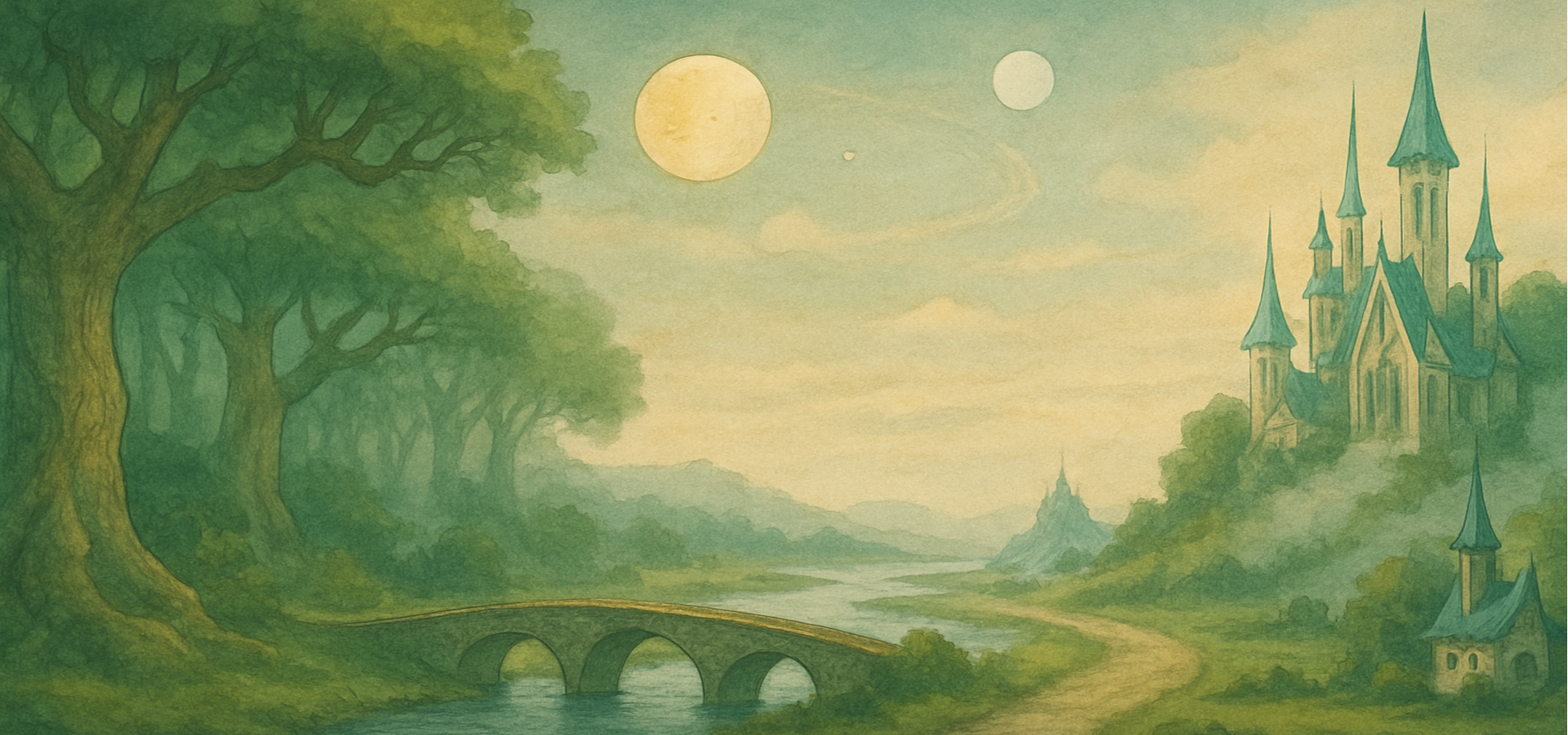Fiorlas
Capital of Doriande
Fiorlas is one of the oldest cities of the Dorian peninsula and serves as the seat of the Kingdom.
Demographics
Approximately 60,000 citizens live in and around Fiorlas. While people of many races reside there, the city has historically been, and still is, a predominantly human settlement.
Government
The city is administered by its Council, which holds authority to make decisions, enact local laws, and enforce them. The Council operates under the authority of the High Royal Council, which governs the entire kingdom.
Defences
Fiorlas is fortified with concentric walls. Its acropolis rises atop a natural rocky elevation over 500 meters above the sea.
Watchtowers stand on the acropolis and at regular intervals beyond the walls, ensuring early warning against threats by land or sea.
As the capital, Fiorlas is protected by the Royal Guard, whose primary duty is to safeguard the regime. The city also maintains its own municipal guard, as well as the main garrisons of the Army and Navy.
Famed mages and priests have contributed magical protections to the city, preparing both defensive wards and offensive spells against attackers.
Industry & Trade
The metropolitan area of Fiorlas is home to numerous artisans and workshops producing clothing, jewelry, preserved foods, and nearly every manufactured good in the kingdom—except products of metalworking, which are mostly crafted in the northern regions.
Large tracts of farmland support thousands of peasants in villages beyond the walls, all of which are administered as part of the greater Fiorlas region.
Fiorlas has always been tied to trade, both by sea and land. It is the chief importer and exporter of goods within the kingdom, a status aligned with its size and influence.
Infrastructure
Grand public works serve both the city and the kingdom at large. Notable examples include:
- Its vast artificial harbor
- The river station on the banks of Ivaris
- The King’s Highway, the kingdom’s principal trade road
- The city’s sewer system, which solved long-standing sanitation issues
Districts
Fiorlas is divided into distinct quarters, separated by internal walls and organized by function—a model that has inspired other cities. The major districts include:
- The Port
- The Lower Trade Road
- The quarters of tanners, butchers, and artisans
- The Academy
- The Barracks
- The Ancients Quarter, where nobility lives
- The Central Plaza
- The Upper Market
- The Acropolis
- The Royal District
Guilds and Factions
Various guilds operate within the city, especially the Merchants' Guild and the Adventurers’ Guild.
In the Academy district, one finds the University, the Temple of Bhanviel, and the Tower of Magical Studies.
Military institutions play a prominent role, recruiting and training cadets within the city walls.
History
Fiorlas was founded in 507 BK, during the Age of Barbarity. Its founders are said to have followed the Ivaris River along the plains until they reached its mouth.
Some scholars believe the earliest Fiorlans already possessed boats and discovered the site while journeying downstream in search of food or safety. Others argue the city was established by foreign peoples arriving by sea.
While early records are virtually non-existent, it is known that after the founding of Skarm and with dwarven support, Fiorlas expanded trade with other settlements and began to grow in power.
Its drive to secure more resources and markets—among other factors—contributed to the outbreak of the The Trade War.
Fiorlas survived both Invasions, granting it an advantage over other cities. It played a key role in the The Alliance of the Forts and contributed to the founding of Waygate .
At the end of the war, with other cities in ruins, Fiorlas emerged as the de facto center of authority, becoming the capital of the new kingdom and a symbol of unity for the peninsula.
That unity could not last forever. As the kingdom’s economy recovered and grew, new tensions emerged—particularly those of the modern Triarchy.
Points of interest
The Market, the Central Plaza, the Royal Court, the Academy, the Port are places everyone wants to see at least once in their lifetime.
Tourism
Many people visit the capital each year for reasons beyond trade or politics. Some are drawn by the Great Library of the University, seeking knowledge and rare tomes. Others make pilgrimages to the Temple of Bhanviel, praying for the swift recovery of loved ones.
Wealthier visitors—particularly Skarmites and northern elites—come for the Upper Market, renowned for its antiquities and rare curiosities. Fiorlas also receives tourists from foreign lands, as well as emissaries from distant governments, who admire the city’s architecture and observe its customs.
Once a year, on the anniversary of the Kingdom’s founding, Fiorlas hosts a grand celebration. The Central Plaza overflows with revelers and performers. Each district organizes its own festivities, and as night falls, the city’s mages unleash spectacular fireworks over the bay. The event draws visitors from across Doriande, and the city’s population swells to over eighty thousand for the duration of the celebration.
Architecture
The city is known for its archaic aesthetic, consistent throughout its quarters. Its arches, curved streets, and colors reminiscent of its port-town origins give Fiorlas a unique character unmatched elsewhere in the kingdom.
Geography
Fiorlas is located on the western coast of the peninsula, in a natural bay where the Ivaris River meets the sea. It enjoys access to fertile plains and is protected by the hilltop acropolis that rises over the coastline.
Climate
The region has a temperate climate, ideal for agriculture and year-round habitation.


Comments